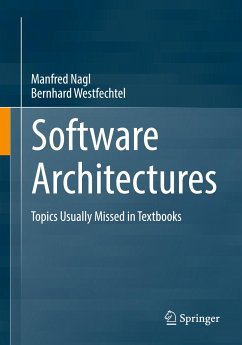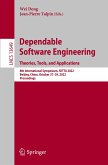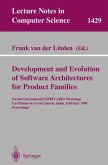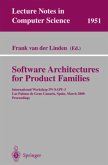This textbook concentrates on processes, activities and results related to software architectures. It describes the separation of architecture artefacts corresponding to their nature, their logical or their modeling level on one hand and at the same time emphasizes their integration based on their mutual relations. Design or development processes demand for integration, as different artifacts must be elaborated, which are mutually dependent and need to be in a consistent form.
The book is structured in four parts. The introductory Part I deals with the relevance of architectures, the central role of the design subprocess both in development or maintenance, and the importance of the decisions and artefacts in the overall result. Another topic is the spectrum of views an architecture language has to offer, and that there are different architectures to be regarded, from abstract and static to detailed, technical, and specific. Part II then discusses "important topics" onthe architecture level. It deals with adaptability especially for embedded systems, with integrating styles/ pattern notations, with different reuse forms and how to find them, with the role of architectures for integrating different existing systems, and with reverse and reengineering of legacy systems. Next, Part III covers architecture modeling and its relation to surrounding activities, as well as architectures to surrounding other results. The single chapters are on transformation between requirements and architectures, architectures and programming, architectures and project management and organization, as well as architectures and their relations to quality assurance or documentation. Eventually, Part IV summarizes the main messages and presents open problems, both for every single chapter and across chapters.
Every chapter focuses on a specific problem it addresses, a question it answers, the attention it demands, a message it conveys, and further open questions itraises. The chapters are mostly independent, which implies a certain redundancy, yet it allows lecturers (and their students) to either use the book as the basis of teaching software architecture or design, or to just pick those aspects that need special attention in a more advanced course.
The book is structured in four parts. The introductory Part I deals with the relevance of architectures, the central role of the design subprocess both in development or maintenance, and the importance of the decisions and artefacts in the overall result. Another topic is the spectrum of views an architecture language has to offer, and that there are different architectures to be regarded, from abstract and static to detailed, technical, and specific. Part II then discusses "important topics" onthe architecture level. It deals with adaptability especially for embedded systems, with integrating styles/ pattern notations, with different reuse forms and how to find them, with the role of architectures for integrating different existing systems, and with reverse and reengineering of legacy systems. Next, Part III covers architecture modeling and its relation to surrounding activities, as well as architectures to surrounding other results. The single chapters are on transformation between requirements and architectures, architectures and programming, architectures and project management and organization, as well as architectures and their relations to quality assurance or documentation. Eventually, Part IV summarizes the main messages and presents open problems, both for every single chapter and across chapters.
Every chapter focuses on a specific problem it addresses, a question it answers, the attention it demands, a message it conveys, and further open questions itraises. The chapters are mostly independent, which implies a certain redundancy, yet it allows lecturers (and their students) to either use the book as the basis of teaching software architecture or design, or to just pick those aspects that need special attention in a more advanced course.








